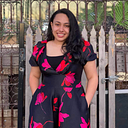The Plight of Coptic Women
As she awakes early in the morning, Hoda excitedly prepares her costume, eager to attend her school Easter party. She skips around the house in delight, hugging her mother with all her strength, expressing her content for the day ahead.
At school, she plays with her friends, eagerly munching on delicious chocolate eggs she had longed for. She twirls in her costume, takes photos with her peers and teachers, wishing the party won’t end. Grabbing a few extra chocolates for her family, she rides a tuk-tuk home, excited to tell them about the celebrations. Her mother prepares dinner, and eagerly awaits Hoda’s arrival.
But Hoda doesn’t make it home. Her parent’s worst nightmare is now reality.
Hoda is only 16 years old, and has a life ahead of her, but is now merely another number that signifies the emergence of human trafficking of Coptic women.

Unfortunately, victims like Hoda are neglected by blinded authority for an array of reasons. Such ignorance stems from complexities within societal, political and religious structures. Often, escaped victims are hesitant to report crimes, due to Egypt’s cultural stigmas to victims of assault, rape, kidnappings, along with the narrative of potential ‘shame’ inflicted upon the victims’ families. Moreover, due to the Brotherhood’s and Salafist’s abhorrence of President Sisi, and the Copts’ support for the president, the Christian minority has served as a pawn for extremists in their attempts to overthrow El-Sisi.

Most importantly, police cooperation with the perpetrators has furthered the obstruction of justice.
An ex-kidnapper, has admitted to police assistance, claiming that officers are often recipients of monetary awards paid by Islamist organisations, in exchange for their cooperation.
Some police fraudulently draft testimonies on behalf of these kidnapped women, claiming that they are not abducted, but rather, have ‘chosen’ to leave their families’ homes, to voluntarily convert to Islam. Such claims hinder an adequate investigation, eliminating all forms of hope.
Moreover, some police provide the kidnappers with confiscated drugs in order to weaken the women, leaving them in a state of delusion. At times, they have also assisted in the physical abuse of these victims, coercing their recital of the Islamic creed.
Once, these girls reach the legal age, a specially arranged Islamic representative comes in to officialise the conversion official, issuing a certificate to later change their ID. Often, these victims are later forced into an Islamic marriage, with a fundamentalist Muslim. They are subject to a strict lifestyle, with limited movements and regular surveillance by their husband and their family. In a case of attempted escape or reversion, the woman is victim to physically and mentally abuse, and death threats.
Undoubtedly, this recurring cycle of kidnappings, forced marriages, and the aforesaid testimonies of ‘voluntary’ conversion has diminished the credibility of police reports and the legitimacy of this defence body. While many police departments have served honestly in Egypt, playing an integral role in protecting civilians, the aforesaid cooperation exposes the increasing corruption and bribery of individuals under oath, that is prevalent in various MENA countries.
Evidently, the recent escape of C.Z, a kidnapped Coptic woman, emphasises the fallacy of voluntary conversion. In June 2020, this 22-year old Coptic woman, from the region of al-Amiriya, was kidnapped and forcibly converted to Islam. Under duress, she posted a video on her Facebook page, announcing her ‘willing’ conversion and departure from her family.
Public videos posted by the kidnapped victims claiming their independant conversion, is a frequent tactic used by kidnappers to deter public involvement.
However, under closer observance, the video exposes her attempt to hold back tears, and her subtle display of bruises on her face and wrists, in a silent plea for help. A few days later, she was left on the streets and phoned her family, as the kidnappers had allegedly mistaken her for ‘another woman’.

The reason for her freedom may be unknown, but often at times, kidnappers search for women that hold particular positions to attain a higher ransom. An ex-kidnapper admits, that “the value of the reward increases whenever the girl has a position”, such as “the daughter of a priest” or a daughter from “a well-known family.” So, it is plausible that the kidnappers were unable to receive the exact monetary reward due to her lower status.
Yet, this is not always the case. C.Z is one of the few victims, where a random fluke allowed for an escape.
Yet, with Egypt’s normalisation of public sexual harassment, assault, bribery, and police corruption, it is unlikely that C.Z will be the last victim of human trafficking.
